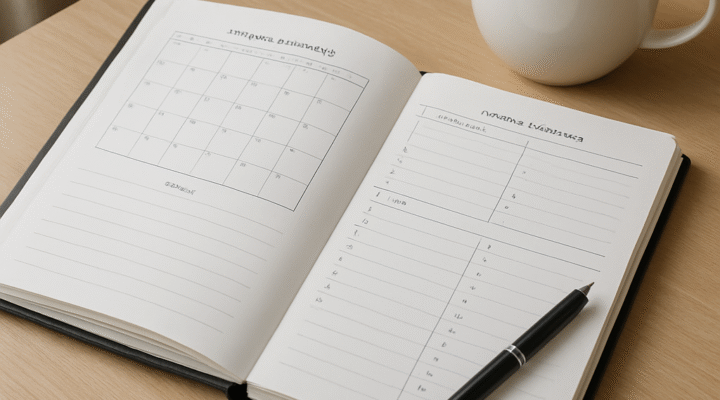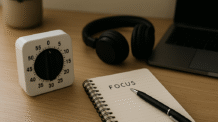
A personal planner is more than just a place to list your appointments—it’s a tool for clarity, intention, and control over your life. When set up thoughtfully, it becomes your personal assistant, helping you manage time, focus on priorities, and reduce mental overload.
But you don’t need an expensive system or a complicated setup to make it work. In fact, the most effective planners are often the simplest. Here’s how to build your own functional personal planner that actually supports your lifestyle.
1. Choose Your Format
Start by selecting the style that fits your preferences and habits.
- Paper planner: Ideal for people who enjoy writing by hand and disconnecting from screens.
- Digital planner: Great for those who prefer flexibility, syncing across devices, and integration with other tools.
- Hybrid: Combine both (e.g., Google Calendar for appointments + notebook for task lists).
Choose what feels natural and easy to maintain.
2. Define the Core Sections
A personal planner works best when divided into meaningful sections. Some essentials:
1. Monthly Overview
- Use a calendar layout
- Mark appointments, trips, birthdays, and deadlines
2. Weekly Layout
- Break your week into days
- Allocate time blocks and list priorities
- Add space for notes and reflections
3. Daily Planning
- Write 3–5 top tasks
- Add to-dos, reminders, or focus goals
- Include a spot for gratitude or mood tracking
4. Goals Section
- Set short- and long-term goals
- Break goals into action steps
- Track progress weekly or monthly
5. Notes & Ideas
- Keep a space for brainstorming, ideas, quotes, or reflections
3. Keep the Design Minimal
The goal is clarity—not complexity.
- Avoid over-decorating or crowding pages
- Use clean lines, consistent fonts or handwriting
- Use color coding sparingly for clarity, not chaos
- Leave white space—it gives your mind breathing room
4. Use Symbols or a Key System
A basic key system can make your planner more functional.
- ✅ Completed task
- ➡ Task moved to another day
- ❗ High priority
- ✖ Cancelled
- 💡 Idea or note
You can customize your symbols—just stay consistent.
5. Plan Weekly, Adjust Daily
Structure your week in advance, then adapt as needed each day.
- Set aside 30 minutes each Sunday or Monday to plan the week
- Revisit your planner every morning and evening
- Check off tasks, adjust your focus, and reflect
This rhythm creates flow and consistency.
6. Include Space for Life, Not Just Work
A personal planner should reflect your whole self—not just your tasks.
- Schedule rest, hobbies, meals, self-care, and social time
- Track habits like water intake, exercise, reading, or meditation
- Add reminders for birthdays, downtime, or fun activities
Your life deserves to be planned with the same intention as your job.
7. Stick to What You’ll Use
Start with only the sections you know you’ll use.
- Don’t overbuild with unnecessary trackers or extras
- If something doesn’t work, drop it
- A planner should support you—not overwhelm you
Let it evolve with your routine.
8. Use It Every Day—Even for Just 5 Minutes
Consistency makes the system effective.
- Review your planner in the morning to set the tone
- Use it during the day to stay focused
- Reflect each night to prepare for tomorrow
- Make it a non-negotiable habit like brushing your teeth
9. Customize With Purpose
Personal touches help make your planner feel like your own.
- Add quotes, doodles, or colors that inspire you
- Use tabs, bookmarks, or dividers for quick access
- Keep it flexible—change layouts as your needs shift
Customization should serve clarity and motivation.
10. Remember: Done Is Better Than Perfect
You don’t need an aesthetic spread or flawless handwriting. The real power of a planner lies in its utility, not its look.
- Keep it messy if that’s what helps you move forward
- Focus on function, not performance
- Show up daily—even if it’s just a single note or task
Your Planner Is Your Partner
A simple and functional personal planner helps you take back control of your time and energy. It turns chaos into clarity, noise into intention, and scattered thoughts into organized action.
Build it slowly. Use it consistently. And watch how much more confident, calm, and focused you become.



Deixe um comentário